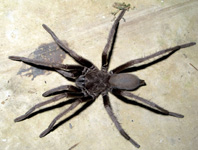Abstract
Two new free-living marine nematode species of the genus Paracomesoma and genus Metacomesoma belonging to family Comesomatidae are described from the sublittoral sediment of the East China Sea. Paracomesoma zhangi sp. nov. is characterized by cuticle with fine transverse rows of dots, without lateral differentiation; buccal cavity with three small teeth; cephalic setae 13.5 μm long; multispiral amphideal fovea with three turns; spicules slender and elongated with thick cuticularized proximal end; gubernaculum plate-like without apophysis; 26 minute precloacal supplements. Metacomesoma macramphida sp. nov. is characterized by very small buccal cavity without teeth; inner and outer labial sensilla papilliform; four cephalic setae 1.5 μm long; multispiral amphideal fovea large, with 4.5 turns; spicules slender and elongated, with cephalated proximal end and finger-shaped distal end; gubernaculum plate-like, without apophysis; precloacal supplements absent. An updated dichotomous key for the identification of the males of the species of Paracomesoma is provided.
References
Chen, G.T. & Vincx, M. (2000) New and little known nematodes (Monhysteroida, Nematoda) from the Strait of Magellan and Beagle Channel (Chile). Hydrobiologia, 429, 9–23.
https://doi.org/10.1023/A:1003995005971Filipjev, I.N. (1918) Free-living Marine Nematodes of the Sevastopol Area. Issue 1. Tipografiya Rossiiskoi Akademii Nauk, Petrograd, xii + 611 pp. [in Russian]
Filipjev, I.N. (1929) Classification of freeliving Nematoda and relations to parasitic forms. Journal of Parasitology, 15, 281–282.
Fonseca, G. & Bezerra, T.N. (2014) Order Araeolaimida De Coninck & Schuurmans Stekhoven, 1933. In: Schmidt-Rhaesa A. (Ed.), Handbook of Zoology, Gastrotricha, Cycloneuralia and Gnathifera. Vol. 2. Nematoda. De Gruyter, Berlin/Boston, pp. 467–486.
Gagarin, V.G. & Tu, N.D. (2014) Paracomesoma minor sp. n. and Microlaimus validus sp. n. (Nematoda) from the coast of Vietnam. Zootaxa, 3856 (3), 366–374.
https://doi.org/10.11646/zootaxa.3856.3.4Gourbault, N. (1980) Nématodes abyssaux (Campagne Walda du N/O "Jean Charcot"). II. Espèces et genre nouveaux de Comesomatidae. Bulletin du Museum Nationale d’ histoire naturelle, Paris, 3, 737–749.
Jensen, P. (1979) Revision of Comesomatidae (Nematoda). Zoologica Scripta, 8, 81–105.
https://doi.org/10.1111/j.1463-6409.1979.tb00621.xPlatt, H.M. (1985) The freeliving marine nematode genus Sabatieria (Nematoda: Comesomatidae). Taxonomic revision and pictorial keys. Zoologrcal Journal of the Linnean Society, 83, 27–78.
https://doi.org/10.1111/j.1096-3642.1985.tb00872.xSchuurmans Stekhoven, J.H. (1950) The freeliving marine nemas of the mediterranean. I. The bay of Villefranche. Mémoires de l'Institut Royal des Sciences Naturelles de Belgique, Deuxième Série, 37, 1–220.
Semprucci, F. (2015) A new species of Paracomesoma (Comesomatidae) from Maldives (Indian Ocean) with an emended diagnosis and an updated key of the genus. Journal of the Marine Biological Association of the United Kingdom, 95 (2), 339–347.
https://doi.org/10.1017/S0025315414001143Sun, Y. & Huang, Y. (2017) One new species and one new combination of the family Xyalidae (Nematoda: Monhysterida) from the East China Sea. Zootaxa, 4306 (3), 401– 410.
https://doi.org/10.11646/zootaxa.4306.3.6Wieser, W. (1954) Free-living marine nematodes II. Chromadoroidea. Acta Universitatis Lundensis, New Series 2, 50 (16), 1–148.
Zou, C.Z. (2001) Research on free-living marine nematodes near Xiamen Island—new and known species of family Comesomatidae (Nematoda). Journal of Oceanography in Taiwan Strait, 20, 48–53. [in Chinese]

